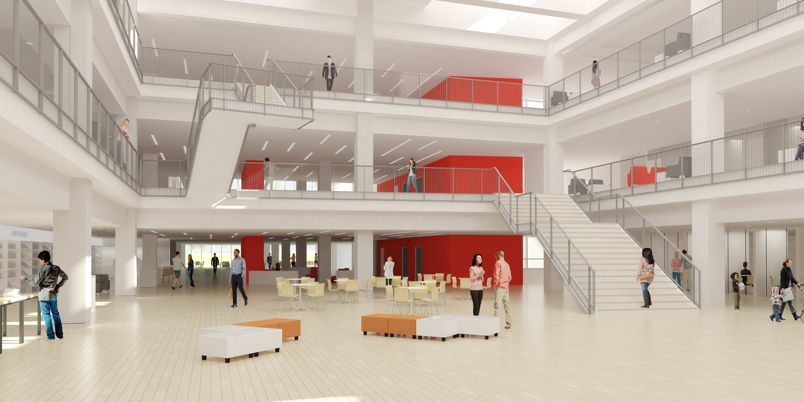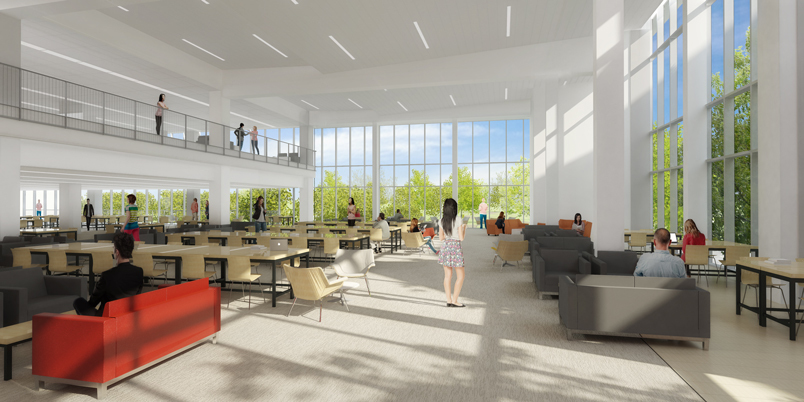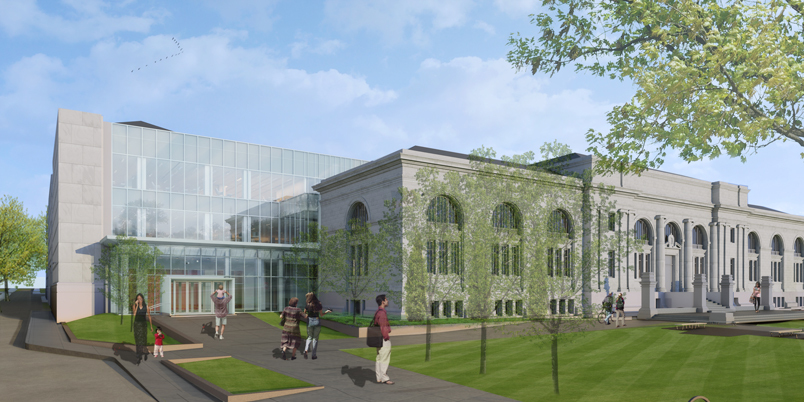Lee Dykxhoorn AIA

Name: Lee Dykxhoorn AIA
Job title and company: Architect, Charles Rose Architects
Degree(s): MArch, Massachusetts Institute of Technology (MIT); BDes, University of Florida
Professional interests:
Creating buildings that create quality public spaces, using design technology to improve project delivery, and making design more accessible to the public.
What are you working on now?
I recently wrapped up working with Gund Partnership on a renovation of the main branch of the Columbus Metropolitan Library. Here in Boston, it is a point of civic pride that the main branch of our public library has “Free to All” inscribed over the door to the McKim Building. The library building that we renovated in Columbus was built around the same time period with a similar inscription. Carved into the stone over the front door is “Open to All,” a statement of values that signals the founding and continuing importance of the message of inclusion. The people that use the library come from very different backgrounds—ranging from students coming for homework help to parents bringing children to early reading events to homeless people served by job training programs and computer access. This diversity creates a number of opportunities to design an accessible, welcoming environment for everyone.
I am also working with Learning By Design, a program of the BSA Foundation, on a number of outreach events teaching design skills at an early education level. We host monthly Family Design Days at BSA Space and design workshops at local museums and community centers. There is also a project in the works that I am very excited about that aims to combine design charettes with game mechanics to build public engagement for Imagine Boston 2030.
How do you explain to your mom what you do for a living?
I don’t have to explain what I do for a living, but I do find myself constantly pointing out the spaces we are in or what I find so interesting about a particular building.

Above: New atrium at the Columbus Metropolitan Library, Gund Partnership.
What architectural buzzword would you kill?
Brutalist. I am with Mark Pasnik AIA on this one. The negative connotations of the word do not do any favors to the public perception of the buildings it is applied to.
What inspired you today?
The #techstyle exhibition at the Museum of Fine Arts, Boston, has a very interesting set of pieces from the intersection of digital fabrication and fashion. The layered shell structure of the Kinematics Dress by Nervous System is exquisite. The design process allows for a mass-produced custom fit and reduces assembly labor as modules can be 3-D printed in a single step with joints in place. I get excited thinking about ways to introduce similar fabrication techniques into architecture to influence form-making and redefine how buildings get constructed.

Above: New reading room at the Columbus Metropolitan Library, Gund Partnership.
What are you reading?
I recently finished Paul Goldberger’s Building Art: The Life and Work of Frank Gehry. I found it easy to empathize with the younger Gehry as he was trying to determine how he would develop a career practicing architecture and interesting to see him revisit it again and again as he reinvented his practice over the years. I highly recommend the book. I also recently picked up a copy of Streetfight: Handbook for an Urban Revolution by Janette Sadik-Khan. She was the commissioner of the New York City Department of Transportation during a transition to bike lanes and safer, pedestrian-friendly streets. The book is a document of the political struggles necessary to enact any significant change in a complex urban environment.
Do you sketch by hand or digitally?
This depends on the situation, since a hand sketch will always be the fastest way to get an idea down, but if it is a working sketch I always work digitally. I follow a native digital thought process, and digital lends itself easily to multiple dimensions, parametric processes, time-based manipulations, and versioning. That being said, nothing beats pen and paper.

Above: Exterior Renovation at Columbus Metropolitan Library, Gund Partnership.
Can design save the world?
No. Not by itself. Design can be a catalyst for change or a tool for drawing attention to a set of issues, but taken by itself, and divorced from the various forces that shape our work, it is not going to save the world. Nonetheless design can help align the political, social, and economic forces into an alliance that could promote change. This is where the social imperative of architecture lies.
Your least favorite college class?
I don’t think I took any classes I didn’t like. My favorite classes were usually theory classes, with the best being the theory seminar that Mark Jarzombek teaches at MIT.
Your favorite Boston-area structure?
No contest—the 1955 MIT Chapel by Eero Saarinen. It is a powerfully peaceful space that reaffirms my belief in the power of architecture every time I am able to visit.
Who would you like the BSA to interview next?
Chris Neukamm of Stantec, and Mary Hale AIA of Shepley Bulfinch.
